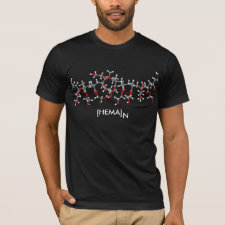
Authors: Sun YH, Zhong S
Article Title: Nanoscale trifunctional bovine hemoglobin for fabricating molecularly imprinted polydopamine via Pickering emulsions-hydrogels polymerization.
Publication date: 2017
Journal: Colloids and Surfaces B: Biointerfaces
Volume: 159
Page numbers: 131-138.
DOI: 10.1016/j.colsurfb.2017.07.069
Alternative URL: https://www.researchgate.net/publication/318775782_Nanoscale_trifunctional_bovine_hemoglobin_for_fabricating_molecularly_imprinted_polydopamine_via_Pickering_emulsions-hydrogels_polymerization
Abstract: In this work, a novel strategy was developed for the selective recognition of protein based on oil-in-water Pickering emulsions-hydrogels polymerization and interfacial imprinting method. For the first time, nanoscale trifunctional bovine hemoglobin (BHb) played three roles simultaneously during the process, including emulsifier, template protein and sacrificial material for further exposing recognition sites. Prior to acting as stabilizers, bovine hemoglobin colloidal particles (BCPs) were firstly prepared by acidification and heat denaturation. Then the BCPs acted as "surfactant" to stabilize the Pickering emulsions composed of functional monomers in the water phase. After dopamine polymerized, the template proteins were removed, forming the BHb imprinted cavities on the surface of the polymeric materials. During this process, the interfacial BCPs also fell off, leaving more imprinted cavities exposed. FT-IR spectroscopy confirmed that BCPs were completely removed from the synthesized imprinted materials. The interconnected macropores structures of the materials encouraged nearly all of the rebinding sites located on its surface. Thus the prepared Hydro-MIPs exhibited rapid and selective recognition toward BHb. Owing to the hierarchical porous structure, the BHb imprinted polymers based on Pickering emulsions-hydrogels (Hydro-MIPs) possessed enhanced rebinding kinetics, and the maximum rebinding capacity is 449 mg g-1, 3.97 times higher than that of the non-imprinted polymers (Hydro-NIPs). Besides these, the regeneration ability test suggested that the Hydro-MIPs could be used repeatedly without distinct loss in adsorption capacity. Overall, the combination of high selectivity, good mass transfer efficiency, easy preparation and trifunctional BHb provide a new insight into bioseparation and proteomics research in biological area
Template and target information: protein, bovine hemoglobin, BHb
Author keywords: Trifunctional, Pickering emulsion, dopamine, Molecularly imprinted polymers, protein, selective recognition



Join the Society for Molecular Imprinting

New items RSS feed
Sign-up for e-mail updates:
Choose between receiving an occasional newsletter or more frequent e-mail alerts.
Click here to go to the sign-up page.
Is your name elemental or peptidic? Enter your name and find out by clicking either of the buttons below!
Other products you may like:
 MIPdatabase
MIPdatabase









